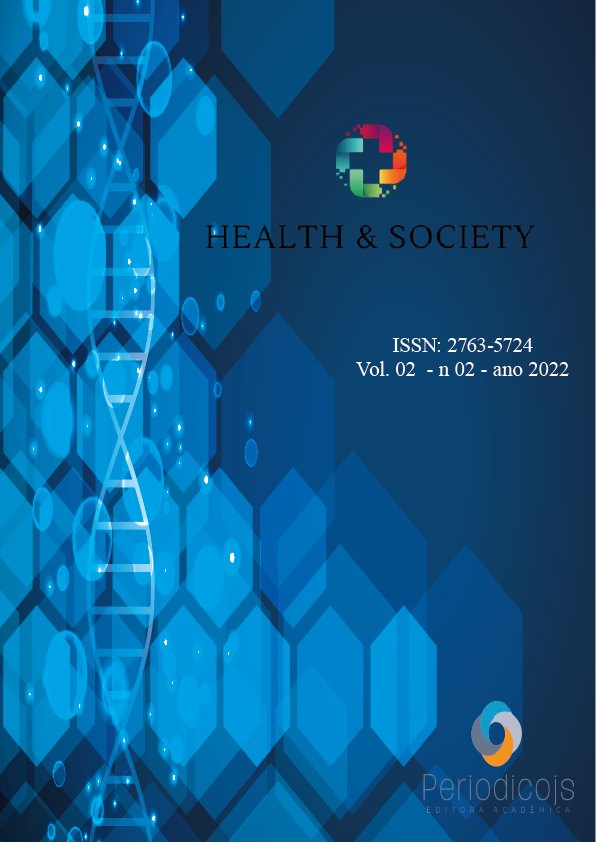Abstract
Halitosis is the term used to define the unpleasant odor exhaled through exhaled air, which may be signaling a pathological, physiological or adaptive condition. Most individuals who present this alteration experience personal discomfort, social embarrassment and emotional anguish, which can cause serious disturbances of coexistence, especially in the school environment. The etiology of halitosis is multifactorial, but its main cause comes from the formation of volatile sulfur compounds (VSC) resulting from the proteolytic bacterial action on stagnant organic matter in the oral cavity. The use of orthodontic appliances may be an agent related to the development of this alteration, since it favors the accumulation of organic residues, epithelial desquamation, gingival inflammation, in addition to making local hygiene difficult. Therefore, the present study aims to evaluate the breath of patients with orthodontic appliances and also the possible presence of bullying related to such an event, in young adults aged between 18 and 24 years, students at Universidade Paulista de Brasília. Breath assessment was performed using an organoleptic test (gold standard), which is performed by the examiner’s sense of smell, and a Halimeter® portable monitor, and saliva assessment was performed using a sialometry test, in which the amount of saliva was evaluated. The possible relationship with bullying was assessed through a specific questionnaire. Of the twelve students included in the study, seven presented halitosis when evaluated through the organoleptic test, however, of these seven only two presented parameters compatible with halitosis, when evaluated by the Halimeter®. In relation to bullying, this study showed that it was present in the lives of many respondents, but not necessarily because of breath.
References
Uliana RMB, Briques W, Conti R. Microbiota oral e suas repercussões no hálito. São Paulo: Artes Médica, 2002. p. 297-308.
Delangue G, Ghyselen J, Van Steenberghe D. Experiences of a Belgian multidisciplinary breath odour clinic. Acta Otorhinolaryngol Bel 1997; 51(1): 43-48.
Neto Oliveira JM. Avaliação clínica em estudo cruzado e randomizado de diferentes métodos para a redução da halitose matinal. 2010. 119 f. Dissertação (Mestrado) - USP, Ribeirão Preto, 2010.
Pedrazzi V, Sato S, de Mattos Mda G, Lara EH, Panzeri H. Tongue cleaning methods: A comparative clinical Trial employing a toothbrush and a tongue scraper. J Periodontol 2004; 75(7):1009-1012.
Liu XN, Shinada K , Chen XC , Zhang BX , Yaegaki K , Y Kawaguchi. Oral malodor-related parameters in the Chinese general population. J Clin Periodontol, 2006; 33(8):31-36.
Salmivalli C, Voeten M. Connections between atitudes, group norms, and behaviors associated with bullying in schools. Int J of Beh Develo 2004. 28:246-258.
Elias MS, Ferriani MGC. Historical and social aspects of halitosis. Rev Lat-Am Enf 2006; 14(5): 821- 823.
Vieira CN, Falcão DP. Tratamento imediato da halitose. Cap. 20 In: Vieira CN, Falcão DP. Odontologia arte e conhecimento. São Paulo: Artes Médicas, 2003. cap 20, p.375-385.
Vieira CN, Falcão DP. Teoria e Prática Halitose: Diretrizes para o diagnóstico e plano de tratamento. In: Brunetti MC, Fernandes MI, Moraes T. Fundamentos da Periodontia. São Paulo: Artes Médicas, 2007, cap.20, p.292-310.
Van Den Broek AM, Feenstra L, De Baat C. A review of the current literature on aetiology and measurement methods of halitosis. Journal of Dentistry 2007; 35(6):27-35
Faber J. Halitose. R Dental Press Ortodon Ortop Facial maio/jun. 2003; 14(3): 14-15.
Cartaxo RO, Padilha WWN. Estudo comparativo entre procedimentos diagnósticos para halitose: uma abordagem preliminar. Pesq Bras Odontoped Clin Integr, 2010 jan./abr; 10(1): 113-119.
Carvalho MF, Rodrigues PA, Chaves MGAM. Halitose: revisão literária. RHU 2008; 34(4): 273-279.
Vieira CN, Falcão DP, Faber J, Nunes FP, Leal SC. Evaluation of periodontal condition and tongue coating as risk factors for halitosis. R. Periodontia 2010; 20(2):53-60.
Garcia DJ, Correia I. Quem é quem no Bullying? In-Mind Português, 1(2-3):22-29.
Silva M.F., Leite F.R.M., Ferreira L.B., Pola N.M., Scannapieco F.A., Demarco F.F., Nascimento G.G. Estimated prevalence of halitosis: a systematic review and meta-regression analysis.Clin Oral Invest Jan; 22(1):47-55. doi: 10.1007/s00784-017-2164-5.PMID:28676903,2018.
Baharvand M., Maleki Z., Mohammadi S., Alavi K., Moghaddam K., Jalali E. Assessment of oral malodor: a comparison of the organoleptic method with sulfide monitoring.J Contemp Dent Pract.; 9(5): 76–83, 2008.
Falcão D.P., Vieira C.N., Amorim R.F.B. Breaking paradigms: a new definition for halitosis in the context of pseudo-halitosis and halitophobia. J. Breath Res.; 6 (7):01-05, 2012.
Pham TA, Ueno M, Shinada K, Kawaguchi Y. Comparison between self-perceived and clinical oral malodor. Oral Surg Oral Med Oral Pathol Oral Radiol.; 113(1):70-8, 2012.
Rosenberg M., Kulkarni G.V., Bosy A., Mcculloch C.A.G. Reproducibility and sensitivity of oral malodor measurements with a portable sulphide monitor. J Dent Res.; 70:11:1436-1440, 1991b.

This work is licensed under a Creative Commons Attribution 4.0 International License.
Copyright (c) 2022 Health and Society





